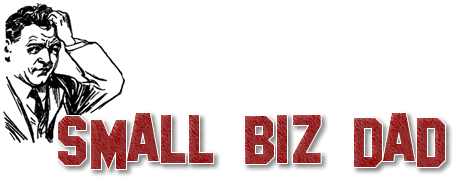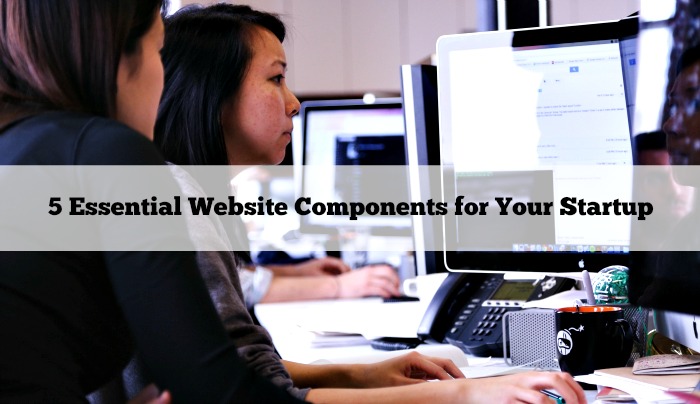Looking to start a top notch website? Feeling overwhelmed and not sure where to start? Do you know what components are essential for startup websites?
Creating a new website may seem like a challenge, but rest assured with these five essential website components, your site will be all you hoped and more. I’ve compiled a list of the five most essential website components to incorporate into your next startup. Not a startup? No problem. Revamp your current website by incorporating these components into your existing website.
Content:
Whether you are starting a personal lifestyle website or a retail store online, one thing is certain; your content is vital to your websites success.
Headline & Tagline:
The first thing your audience sees when they visit your website is your headline, followed by your tagline. Think of your headline as your ‘first impression’ that will either keep your audience wanting more or running off to find another site to browse. It’s no wonder headlines plays such a key element in a websites success. With so much riding on a few words, it is absolutely imperative that you spend quality amounts of time coming up with your headline. A few things to consider when creating a headline:
- Keep it clear
- Concise & to the point
- Enticing
Images:
The saying is true, ‘a picture is worth a thousand words’, especially in our photo loving world that we live in. Our society moves at such a fast pace that sitting for extended periods of time reading a long post is just not an option. This is where photos come in. If you include photos in your posts you drastically increase your likely-hood of capturing your audiences attention.
Videos:
Videos allow you to include a lot of content in a short amount of time. Videos allow you to be more intimate with your audience while at the same time telling your company or personal story.
Keep your videos short and to the point. This will keep your audience engaged and intrigued.
Pages:
- About Page:
Your ‘About’ page will be one of the most viewed pages on your site. It should include answers to questions such as…
- Who you are
- What you do
- Why they should be interested in this website
- FAQ Page:
FAQ Page or, frequently asked questions, is a compilation of all the top questions you receive from your audience, along with all of your answers to those questions. Think of your FAQ page as a place your audience can find ‘everything they need to know’ about your site.
- Contact Page:
Make it easy for your audience to get in contact with you. This page should include an email address, phone and fax number, as well as a physical address(if it’s relevant).
Design:
The design of your website is another crucial component to your websites success. Too much clutter? Your audience will flounder around to find what they are looking for. Poorly designed layout? Your audience will only look to their beloved back button without ever taking a backwards glance at your site.
With web design trends constantly changing, it’s important to stay up on what’s popular. This will ensure that your website stays up to date for your audience.
Currently, a few of the top trends for 2015 web design include:
Longer Scrolling sites:
Scrolling, instead of clicking on links is the new popular trend. Scrolling allows your viewers to quickly find what they are looking for without having to click multiple links.
Simplicity:
A simplified web design is all the rage. and for good reason. A simple, easy to read website attracts higher amounts of traffic to their sites. A good rule of thumb to simplifying your website is to remove any ‘non-essential’ elements that add clutter.
Hidden Main Menus:
Hidden Menus only become visible to your users when they scroll over them. The purpose of hidden menus is for style as well as de-cluttering your main page. Hidden menus allows your users to focus in on the content on your pages without being distracted.
Big:
Big typography, big pictures, and big layouts that span the entire width of the website. Bigger is definitely better within web design these days. Coupled with a simplistic website, the ‘big’ trend is making a huge impact.
Navigation:
The best content in the world will not help you if your audience is not able to navigate to it’s whereabouts…and quickly.
Simplified Layout:
Powerful navigation is simple and easy to follow. Simplifying the layout of your website increases the ease of navigation for your users.
Bare Minimum:
Another great idea is to limit the amount of ‘menu’ bars and options to a minimum. Too many options will make your audience feel overwhelmed.
Searchable Component:
Make sure you have a ‘searchable’ component to your site, that allows your users to search all of your content. This dramatically increases the ease of navigation.
Consistent Layout:
Consistency is key when creating user friendly navigation. Whichever page your users are visiting, make sure the menu bars are located in the same areas and have the same options available to them at all times.
Home Button:
Lastly, a ‘home’ button should be a vital part of every page within your website. This allows your users to quickly navigate back to your home screen.
Communication:
Communication between you and your audience is crucial for not just startups, but all websites. Communication allows your audience to give you feedback on your websites content. It’s also a great way to start discussions, if that’s the design of your website. It’s a great way to provide excellent customer service to your audience.
Comment Box:
A great way to get feedback is to insert a comment box at the end of each post. This allows your audience to generate feedback to you about content or to ask any questions they may have. I suggest being responsive to comments you receive from your audience.
Surveys:
Another way to generate communication with your audience is to include client/customer satisfaction surveys, if you provide services or sell products.
Contact Page:
Lastly, include a contact page on your website that allows users to send messages directly to your email via your website. This is a great feature for your audience as it requires minimal effort to contact you.
Call to Action:
A call to action is an instruction you want your audience, or target market, to take. This could be anything from ‘shopping’ your website to ‘signing up for a coupon’.
Three great ways in which to create a call to action on your website include:
- Create a free ebook that your audience can download if they subscribe to your website.
- Generate a ‘pop-up’ subscription box when a user enters your website.
- Insert a ‘Shop’ or ‘Buy Now’ button on your main menu
Conclusion:
Now that you have added the 5 essential components listed above to your startup or current site, you will want to constantly be tweaking and improving upon them in order to create a luring website for your audience. These 5 components are essential for any website.
What has been your experience with using these components in starting up your website? Please share your experiences in the comment box below.
Author Bio:
As Utah’s ‘Best of State’ web development firm, Objective brings their clients the best of both the creative and technological worlds. They are also the creators of Built for Teams HR software for small businesses.

